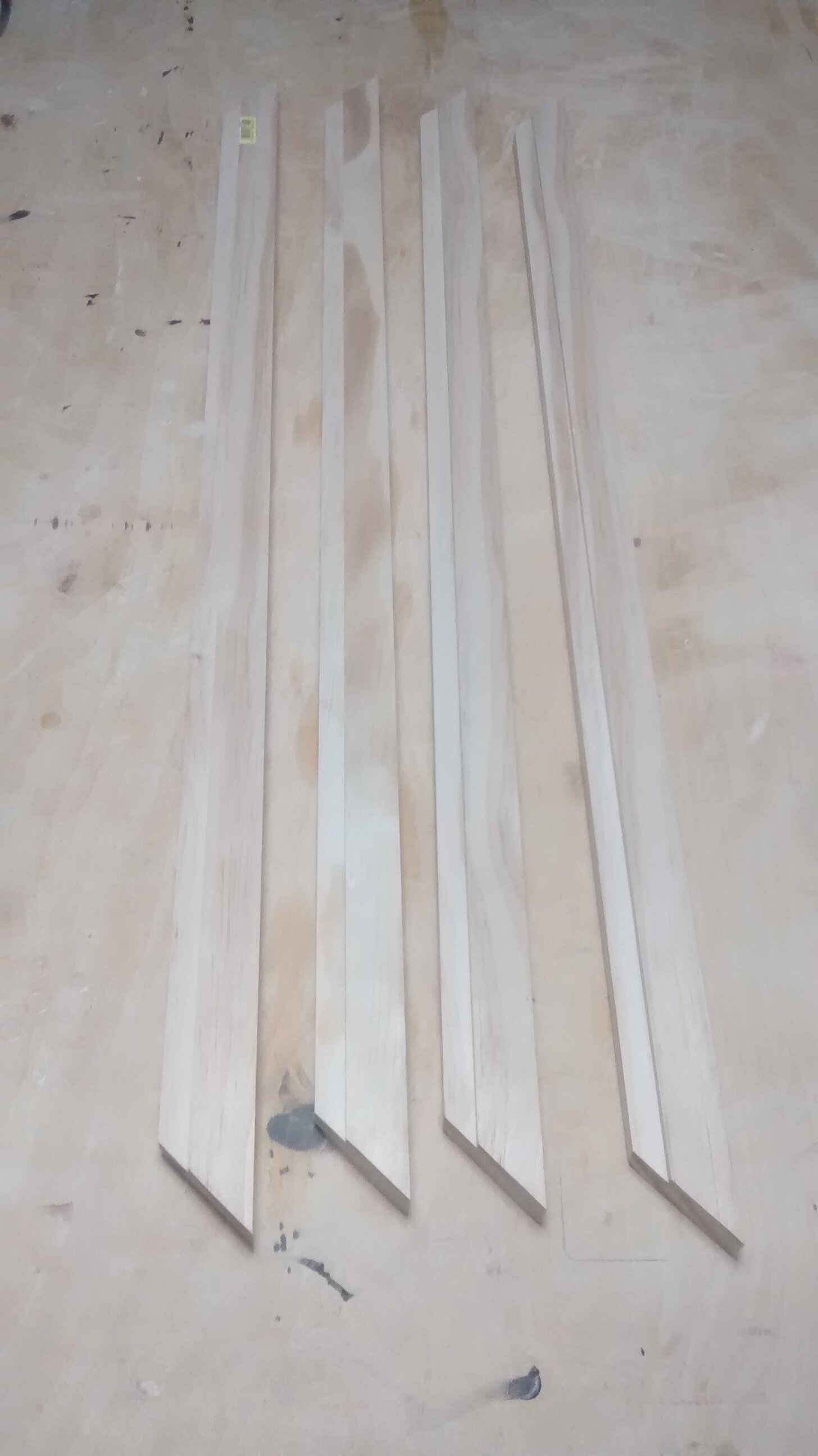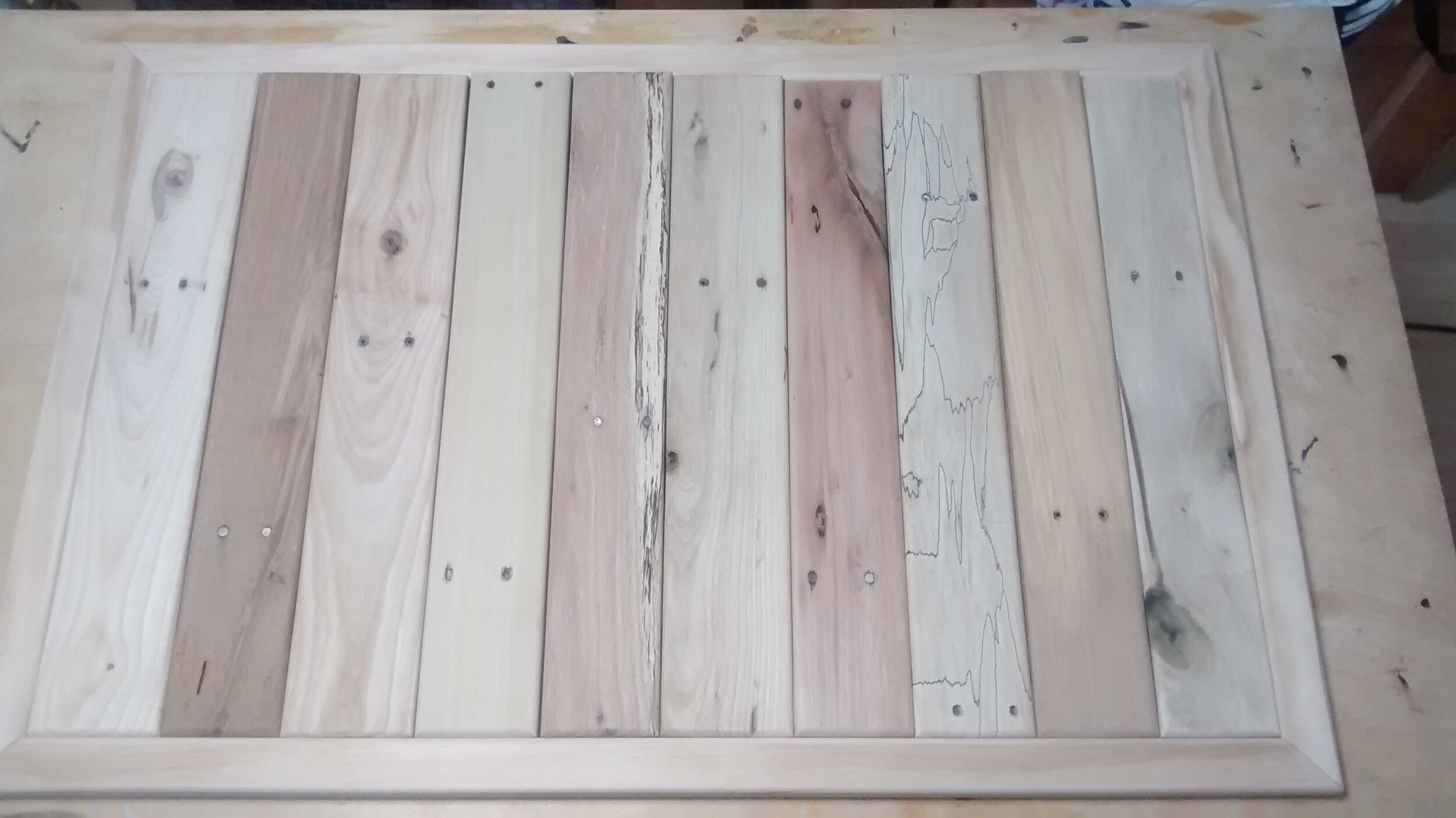Ten Stripe Design Reclaimed Wood Wall Art
Dimensions: Length 37.25 inches; Width 25 inches; Thickness ¾ inch; Weight 15 pounds. This one-of-a-kind piece, which looks both kind of raw and kind of refined, is intended to show off the amazing variety of wood that’s used to make pallets. I uncovered the beauty beneath some very rough and dirty exteriors. For a rustic look, I included the nails or nail holes as I found them. (Actually, it would be almost impossible to select segments of pallet wood this long without any nail holes.) It would look good in a living room, den, dining room, bedroom, hallway or office. I haven’t yet attached D-rings to the back to facilitate hanging it on your wall, because I’m not sure if you’ll want to hang it vertically or horizontally. But if you tell me your plan, I can take care of the final detail before delivery. I was focused on it in landscape position when I designed and made it, but it looks good in portrait position, too. $200. Click here to purchase.
The Story
Sometimes everything works out just right, whether it’s pure luck or coincidence or the law of averages or a blessing from the Upcycling Gods. This was one of those projects. I had a leftover piece of underlayment that looked to be roughly a good size for a wall art project. I also had a fair number of one-off planks of pallet wood—that is, distinct or unique pieces that didn’t match other pieces in my collection. (Pallets typically are made with several closely matching pieces of wood, adjacent slices from the same tree, and I often need matching pieces for more intricate designs/patterns.) Moreover, these leftover planks were pretty straight and flat, not as warped as pallet wood sometimes is. When I started arranging the planks, I realized that 10 of them side-by-side would fit almost perfectly on the backing. To make everything fit, I only had to sand down one short edge of it by roughly 1/16 of an inch and cut less than a 1/4 of an inch off one long edge.
For the frame I used new 1x2 pine lumber from The Home Depot. Using a router, I rounded the top edges and cut a groove in the bottom to accommodate the backing. Then I cut the boards to length with mitered corners. Next I did a special but necessary process. All wood, when it absorbs a liquid like primer or paint or water-based polyurethane, tends to expand, and sometimes it can become rough, almost like you’d never sanded it. The raised grain is called whiskers and the process of fixing this problem is called de-whiskering. I brushed the surfaces with warm water and let them dry, then lightly hand-sanded them smooth again. After attaching the four frame pieces to the backing piece of 1/8-inch thick underlayment—with glue and ½-inch screws—I painted black “shadow lines” where the pallet planks would align, so just in case of any small gaps, you wouldn’t see the natural color of the backing piece. To finish the frame, I applied a dark brown stain (Minwax “Jacobean”) and then, for a little shine to contrast with the pallet wood, three coats of Minwax water-based clear satin Polycrylic, with a light sanding before the final coat.
Because I had already belt-sanded all the pallet wood planks clean and smooth (for efficiency, I often work on large batches of pallet wood at a time ahead of time, so they are more ready for projects I design later), they only needed a little final touching up. After cutting the planks to the proper length with my miter saw, I used my router to round off the top edges. This not only gives the project more depth and texture overall but also creates a better transition to the frame. (Square-edged inner pieces up against a rounded-edge frame of the same thickness would look weird, unfinished.) I put the 10 pieces through the same de-whiskering process described above. Then I applied my selected finish, clear (“Natural”) Watco Danish Oil. The before and after pictures highlight the beautiful difference this product makes, how it brings out the wood’s natural color and accentuates the grain. To keep the pallet wood looking natural, with no sheen, I didn’t apply any polyurethane or varnish. I glued the pieces down to the backing, inside the finished frame, a few at a time.
Related Items: Found Metal and Reclaimed Wood Circular Wall Art #1; Found Metal and Reclaimed Wood Circular Wall Art #2; Found Metal and Reclaimed Wood Circular Wall Art #3; Chevron Pattern Reclaimed Wood Wall Art; Plaid Basket-Weave Pattern Reclaimed Wood Wall Art; Parquet Design Reclaimed Wood Wall Art; 25 Small Squares Reclaimed Wood Wall Art; Pyramidal Reclaimed Wood Wall Art; Stained and Natural D.C. Flags; Abstract Wall Art from Reclaimed Wood.















